Eating Disorders: Anorexia Nervosa and Bulimia Nervosa
http:// youtu.be/QSqtVDIwnHo. Eating Disorders: Anorexia Nervosa and Bulimia Nervosa. Etiology. Biologic Factors Sociocultural Factors Diet and fitness industry Fashion industry Women’s movement Peer pressure Familial Factors Poor conflict resolution Separation, individuation
Share Presentation
Embed Code
Link
Download Presentation
- feelings
- minimize manipulation
- behavioral plan
- biologic factors sociocultural factors
- weight loss
- interdisciplinary staff

dixon + Follow
Download Presentation
Eating Disorders: Anorexia Nervosa and Bulimia Nervosa
An Image/Link below is provided (as is) to download presentation Download Policy: Content on the Website is provided to you AS IS for your information and personal use and may not be sold / licensed / shared on other websites without getting consent from its author. Content is provided to you AS IS for your information and personal use only. Download presentation by click this link. While downloading, if for some reason you are not able to download a presentation, the publisher may have deleted the file from their server. During download, if you can't get a presentation, the file might be deleted by the publisher.
Presentation Transcript
- http://youtu.be/QSqtVDIwnHo Eating Disorders: Anorexia Nervosa and Bulimia Nervosa
- Etiology Biologic Factors Sociocultural Factors • Diet and fitness industry • Fashion industry • Women’s movement • Peer pressure Familial Factors • Poor conflict resolution • Separation, individuation • ENMESHED Psychological Factors • Perfectionism • Social insecurity • Alexithymia • Low self-esteem • Immaturity • Compliance • Sense of ineffectiveness • Interpersonal distrust Thinness is power in crisis: secondary gains
- High-Risk Personality Traits Anorexia Nervosa Bulimia Nervosa Low self-esteem Avoid conflict: complies Feels ineffective Alexithymia Interceptive deficits Impulsive Emotional dysregulation • Low self-esteem • Avoid conflict: complies • Feels ineffective • Alexithymia • Interceptive deficits • Perfectionist • Emotional immature • Avoid risk/harm
- Cycle of Eating Disorders
- Epidemiology • Sex ratio • Age of onset • Cross-cultural • Mortality • Comorbidity
- Behavioral Symptoms of Anorexia Nervosa • Self-starvation • Compulsive behaviors regarding food • May use laxatives or diuretics, and excessive exercise • Wearing baggy clothes
- Physical Symptoms of Anorexia Nervosa • Weight loss 15% below ideal • Amenorrhea • Bradycardia, subnormal body temperature • Cachexia, sunken eyes, dry skin • Lanugo on face • Constipation • Cold sensitivity
- Psychological Symptoms of Anorexia Nervosa • Denial of seriousness of low weight • Body image disturbance • Irrational fear of weight gain • Constant striving for perfect body • Self-concept unduly influenced by shape and weight • Preoccupation with food, cooking • Delayed psychosexual development (little interest in sex, relationships)
- Behavioral Symptoms of Bulimia Nervosa • Recurrent episode of binge eating • Purging behavior to compensate • Self-induced vomiting, use of laxatives, diuretics, enemas, fasting, excessive exercise
- Physical Symptoms of Bulimia Nervosa • Fluid and electrolyte imbalances • Hypokalemia, alkalosis, dehydration, idiopathic edema • Cardiovascular • Hypotension, dysrhythmias, cardiomyopathy • Endocrine • Hypoglycemia, menstrual dysfunction • Gastrointestinal • Constipation, diarrhea, gastroparesis, esophageal reflux, esophagitis, esophageal tears, dental enamel erosion
- Psychological Symptoms of Bulimia Nervosa • Body image disturbance • Persistent over concern with weight, shape, proportions • Mood swings, irritability • Self-concept unduly influenced by weight • Use improved coping strategies. • Exhibit more functional behaviors within family system. • Attend group therapy. • Interact with helpful peers. • Keep appointments to monitor behaviors and medications.
- Prognosis • Variable for each case • Many follow pattern of relapses and remissions; others slowly improve over time • More promising for those who seek and continue treatment • Meds in addition to varied therapy most effective
- Discharge Criteria • Be free from self-harm. • Achieve minimum normal weight. • Consume adequate calories to maintain normal weight. • Demonstrate ability to comply with post discharge regimen. • Verbalize understanding of underlying psychological issues. • Demonstrate coping skills to respond to stress • Attend group therapy sessions
- Assessment Therapeutic alliance is vital. Assess: • Willingness for treatment • Treatment history • Patterns and perceptions regarding weight • Body dissatisfaction • Body image distortion • Dieting history • Binge eating • Feelings regarding binge behaviors • Food cravings • Purging behaviors • Menstrual history • Medical side effects of eating disorder • Comorbidity factors
- Nursing Diagnoses Anorexia Nervosa • Anxiety • Disturbed body image • Nutrition imbalance: less than body requirements • Social isolation Bulimia Nervosa • Ineffective coping • Deficient fluid volume • Chronic low self-esteem
- Outcome Identification • Participate in therapeutic contact with staff. • Consume adequate calories for age, height, and metabolic need. • Maintain fluid and electrolyte balance. • Demonstrate more effective coping strategies. • Manage family dysfunction more effectively. • Verbalize awareness of underlying psychological issues. • Perceive normal body weight and shape as acceptable.
- Implementation • Ensure safe, nonthreatening environment • Prevent self-harm • Therapeutic alliance • Behavioral program to restore weight, nutrition • Structured environment with clear limits • Behavioral plan to reward compliance • Encourage expression of feelings
- Nursing Interventions • Help increase client understanding of body image distortion. • Emphasize client capability to eat small portions without binging. • Maintain clear boundaries. • Avoid power struggles. • Intervene in anxiety. • Give positive feedback for adherence to plan. • Engage in group therapy. • Assist to identify issues (e.g., esteem, identity disturbance). • Teach adaptive strategies. • Collaborate with dietician to teach nutrition. • Collaborate with interdisciplinary staff
- Biologic and Pharmacologic Treatment Modalities Biologic • Medical monitoring/hospitalization • Correcting deficiencies/imbalances Pharmacologic • SSRIs- consider most effective • Prozac is drug of choice (60mg or > needed to have antibulimic effect) Useful in preventing relapses in wt restored clients • Wellbutrin is contraindicated d/t lowering seizure threshold • Use of antianxiety meds is sparing d/t goal for toleration and coping behaviors. • Other meds: K+, Fe supplements, Reglan, stool softeners
- Psychotherapeutic Treatment Modalities • Individual psychotherapy • Behavioral • Contracts • Exposure and response prevention • Cognitive • Reframing • Cognitive restructuring • Family therapy • Decrease secondary gain • Uncover family dysfunction • Group therapy • Safe disclosure • Minimize manipulation and secondary gain • Expressive therapies
- Adjunctive Therapy • Occupational therapy • Nutrition education and counseling • Interdisciplinary treatment team • Community support groups
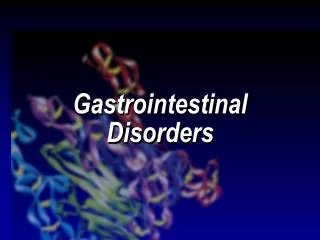
Disorders of Nutrition
Gastrointestinal Disorders . Disorders of Nutrition. Alterations in: Ingesting Digesting Absorbing Eliminating. Anorexia Pica
1.22k views • 69 slides

Psychological Disorders
Psychological Disorders. Chapter 14. Chapter 14 Learning Objective Menu. LO 14.1 Explanations of mental illness and defining abnormal behavior LO 14.2 How disorders relate to biological and psychological models LO 14.3 Types of psychological disorders
1.97k views • 54 slides
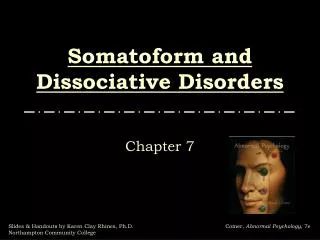
Somatoform and Dissociative Disorders
Somatoform and Dissociative Disorders. Chapter 7. Somatoform and Dissociative Disorders . In addition to disorders covered earlier, two other kinds of disorders are commonly associated with stress and anxiety: Somatoform disorders Dissociative disorders.
1.61k views • 75 slides
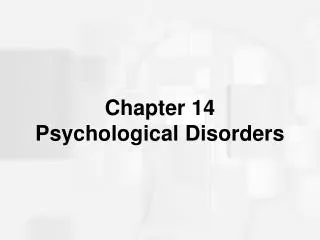
Chapter 14 Psychological Disorders
Chapter 14 Psychological Disorders. What is Normal?. Psychopathology : Scientific study of mental, emotional, and behavioral disorders; abnormal or maladaptive behavior Subjective discomfort : Private feelings of pain, unhappiness, or emotional distress
2.09k views • 63 slides
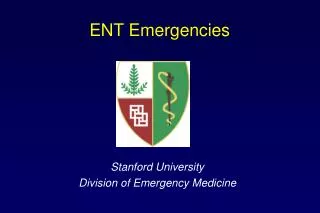
ENT Emergencies
ENT Emergencies. Stanford University Division of Emergency Medicine. Overview. Otologic Disorders Nasal Disorders Facial, Oral and Pharyngeal Infections Airway Obstruction. Otologic Disorders Anatomy. Auricle Ear canal Tympanic membrane Middle ear and mastoid disorders Inner Ear.
2.03k views • 35 slides
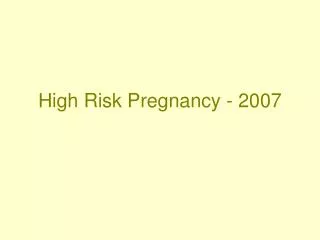
High Risk Pregnancy - 2007
High Risk Pregnancy - 2007. Disordered Eating Obesity Hypertensive Disorders Gestational Diabetes. High Risk Pregnancies. Disordered Eating & Pregnancy: Prevalence. Few data on prevalence of disordered eating in pregnancy
1.71k views • 121 slides

OSCE
OSCE. DR PRASHANT R UTAGE. 4. A) Identify the abnormality on peripheral smear? B) Name 4 conditions where these cells can be seen. Acanthocytes are seen in. 4. • Hereditary abetalipoproteinemia • Hereditary acanthocytosis • End stage liver disease • Anorexia nervosa • Malnutrition
1.61k views • 90 slides
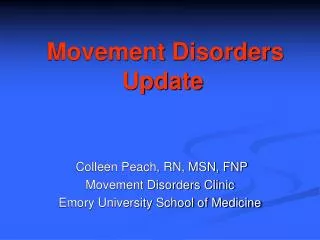
Movement Disorders Update
Movement Disorders Update. Colleen Peach, RN, MSN, FNP Movement Disorders Clinic Emory University School of Medicine. Movement Disorders. Clinically, divided into 2 categories Poverty of movement (Akinesia) Associated with an increase in muscle tone
1.49k views • 61 slides
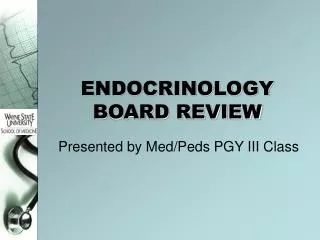
ENDOCRINOLOGY BOARD REVIEW
ENDOCRINOLOGY BOARD REVIEW. Presented by Med/Peds PGY III Class. ENDOCRINOLOGY Disorders of the Hypothalamic – Pituitary Axis. K. Dionne Posey, MD, MPH. ENDOCRINOLOGY. Pituitary Disorders Thyroid Disorders Adrenal Disorders Gonadal Disorders Calcium Disorders Lipid Disorders.
1.51k views • 108 slides
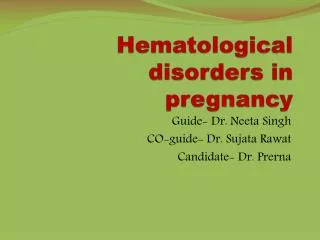
Hematological disorders in pregnancy
Hematological disorders in pregnancy. Guide- Dr. Neeta Singh CO-guide- Dr. Sujata Rawat Candidate- Dr. Prerna. Headings. Disorders of RBC’S – Anemia, Hemoglobinopathies & polycythemia Disorders of WBC’s Disorders of Platlets Coagulation disorders – Inherited/ Aquired
5.64k views • 83 slides

Psychological Disorders
Psychological Disorders. What is a Psychological Disorder?. Psychological Disorders. … are “harmful dysfunctions” in which behavior is judged to be atypical , disturbing , maladaptive , and/or unjustifiable. Atypical. is abnormal – being different from most other people in one’s culture.
1.14k views • 86 slides

Psychological Disorders
Psychological Disorders. What do you think?. Write a definition for a psychological disorder. Do not give examples or define specific disorders- what does it mean to have a psychological disorder?. Disorders in History.
1.67k views • 110 slides
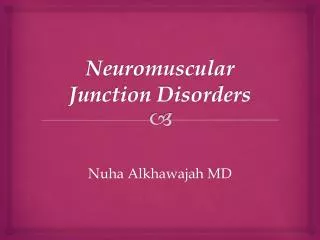
Neuromuscular Junction Disorders
Neuromuscular Junction Disorders. Nuha Alkhawajah MD. Definition of NMJ Disorders. Disorders affecting the junction between the presynaptic nerve terminal and the postsynaptic muscle membrane Pure motor syndromes Preferentially affect proximal, bulbar, or extraocular muscles.
4.59k views • 40 slides
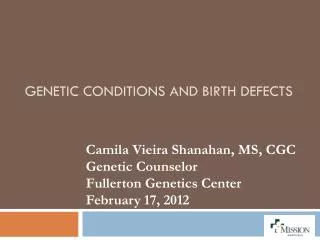
Genetic Conditions and Birth Defects
Genetic Conditions and Birth Defects. Camila Vieira Shanahan, MS, CGC Genetic Counselor Fullerton Genetics Center February 17, 2012. Outline. Prenatal Exposures Types of Genetic Conditions Multifactorial disorders Chromosomal disorders Single gene disorders Mitochondrial disorders
1.3k views • 86 slides

Abnormal Psychology
Abnormal Psychology. Introduction. How should we define psychological disorders? How should we understand disorders? How should we classify psychological disorders?. No one absolute definition of psychological disorders.
3.55k views • 123 slides
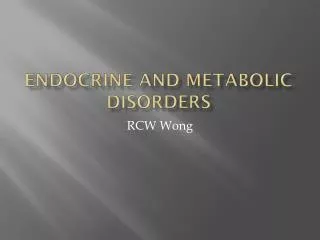
Endocrine and metabolic disorders
Endocrine and metabolic disorders. RCW Wong. Endocrine and metabolic disorders. Endocrine glands regulate homeostasis by secretion of hormones which affect many organ systems Metabolism - process body uses to get or make energy from food.
2.34k views • 91 slides

兒童青少年精神疾病
兒童青少年精神疾病. 台北榮民總醫院 精神部兒童青少年精神科主任 陳映雪醫師. Mental retardation Borderline intellectual function Learning disorders Reading, math, writing Motor skills disorder Communication disorders Elimination disorders Pervasive developmental disorders
1.29k views • 85 slides
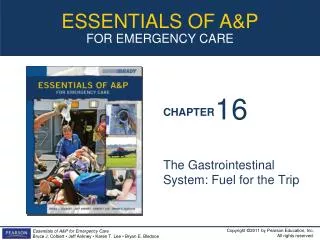
The Gastrointestinal System: Fuel for the Trip
16. The Gastrointestinal System: Fuel for the Trip. Multimedia Asset Directory. Slide 16 Swallowing and Digestion Animation Slide 40 GERD Video Slide 96 Appendicitis Animation Slide 150 Eating Disorders Video Slide 151 Anorexia Nervosa Video Slide 152 Bulimia Video
2k views • 173 slides

Arrhythmias and Devices Module 1
Arrhythmias and Devices Module 1. Objectives. Recognize typical rhythms and rhythm disorders. Arrhythmias and Devices Overview. The Conduction System Normal Conduction Automaticity & Action Potential Causes of Rhythm Disorders Rhythm Disorders Categories Disorders of Impulse Formation
1.36k views • 105 slides
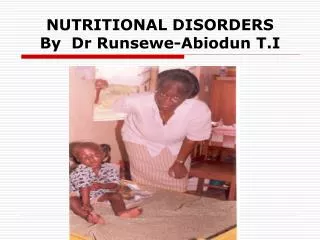
NUTRITIONAL DISORDERS By Dr Runsewe-Abiodun T.I
NUTRITIONAL DISORDERS By Dr Runsewe-Abiodun T.I. Introduction. Nutritional disorders may result from eating too little or too much food. Or they may result from eating too little or too much of a particular nutrient, such as a vitamin or mineral.
1.32k views • 96 slides
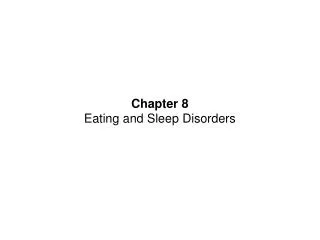
Chapter 8 Eating and Sleep Disorders
Chapter 8 Eating and Sleep Disorders. Eating Disorders: An Overview. Two Major Types of DSM-IV-TR Eating Disorders Anorexia nervosa and bulimia nervosa Severe disruptions in eating behavior Extreme fear and apprehension about gaining weight Strong sociocultural origins – Westernized views.
1.42k views • 88 slides























